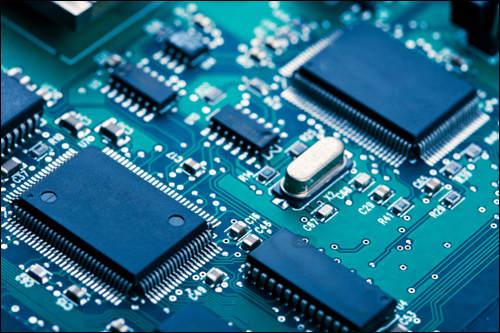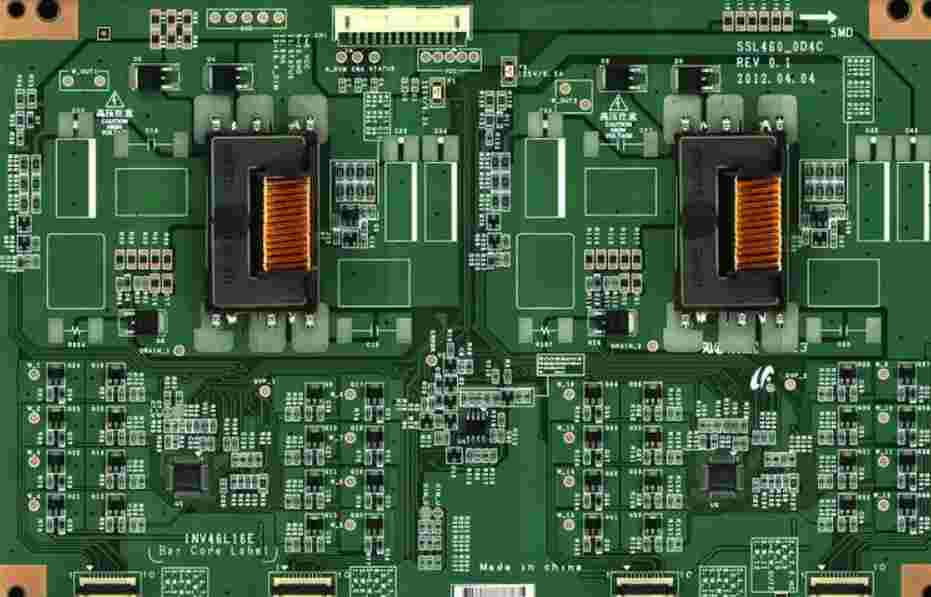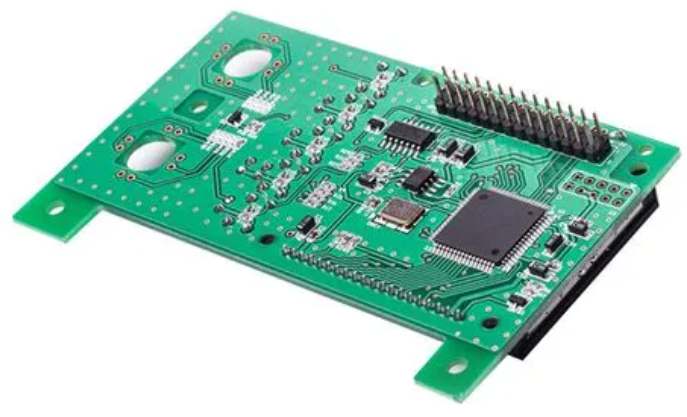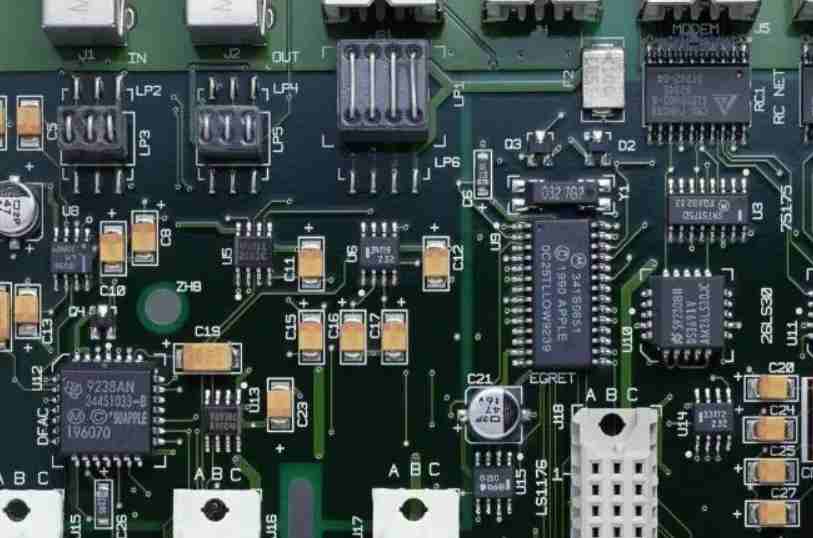
With the continuous development of science and technology, especially information technology, the process technology of printed circuit board production is improved to meet the needs of different users. In recent years, the development of communication, automobile and other fields is very rapid, the demand for printed circuit board has changed, high power printed board, high frequency microwave board demand increases. Microwave printed board refers to microwave devices produced by common rigid circuit board manufacturing method on a specific microwave-based copper clad board.
In the printed board wire high-speed signal transmission line, can be divided into two categories at present: one is the high-frequency signal transmission class of electronic products, this class of products is related to the radio electromagnetic wave, it is the sine wave to transmit signal products, such as radar, radio and television and communication (mobile phone, microwave communication, optical fiber communication, etc.). The other is the high-speed logic signal transmission class of electronic products, this kind of products are based on digital signal transmission, also related to the electromagnetic wave square wave transmission, this kind of products started mainly in computers, computers and other applications, now has been rapidly promoted to home appliances and communication electronic products.
In order to achieve high speed transmission, the electrical characteristics of microwave-printed board substrate materials are required. In order to improve the high-speed transmission, the substrate material with small dielectric constant and dielectric loss Angle tangent must be selected to achieve low loss and low delay of the transmitted signal.
High-speed transfer of substrate materials, generally ceramic materials, glass fiber cloth, PTFE, other thermosetting resins. In all resins, polytetrafluoroethylene dielectric constant and dielectric Angle tangent, and high and low temperature resistance and aging resistance is good, the most suitable for high frequency substrate material, is currently the largest amount of microwave circuit board manufacturing substrate material. The characteristics of microwave printed board manufacturing are mainly reflected in the following aspects:

Substrate diversification:
For a long time, domestic glass cloth reinforced polytetrafluoroethylene copper clad plate is the most used. But because of its single variety, dielectric property uniformity is poor, has become more and more unsuitable for some high performance requirements of the occasion. In the 1990s, RT/Duroid series and TMM series microwave substrate plates produced by Rogers in the United States were gradually applied, mainly glass fiber reinforced PTFE clad plate, ceramic powder filled PTFE clad plate and ceramic powder filled thermosetting resin clad plate. Although the price is expensive, However, its excellent dielectric properties and mechanical properties are still compared with the domestic microwave printed board substrate has considerable advantages. At present, such microwave substrates, especially those with aluminum substrates, are widely used.
The design requires high precision:
The precision of microwave printed board graphics manufacturing will be gradually improved, but due to the limitation of the circuit board manufacturing process itself, the precision improvement cannot be unlimited, and it will enter a stable stage after a certain degree. And the microwave plate design content will be very rich. In terms of types, there will be not only single panel, double panel, but also microwave multilayer panels. The microwave plate grounding, will put forward higher requirements, such as the general solution of polytetrafluoroethylene plate hole metallization, to solve the grounding of microwave plate with aluminum substrate. Plating requirements will be further diversified, with special emphasis on aluminium substrate protection and plating. In addition, higher requirements will be put forward for the overall three protection of microwave plate, especially the three protection of polytetrafluoroethylene substrate.
Computer control:
Computer technology is rarely used in the production of traditional microwave printed board, but with the wide application of CAD technology in design, and the high precision and large quantity of microwave printed board, it has become an inevitable choice to apply a large number of computer technology in the manufacture of microwave printed board. High precision microwave printed board template design and manufacturing, shape NC machining, as well as high precision microwave printed board batch production inspection, has been inseparable from computer technology. Therefore, it is necessary to connect CAD of microwave printed board with CAM and CAT. Through data processing and process intervention of CAD design, corresponding NC machining files and NC testing files are generated for the process control, process inspection and finished product inspection of microwave printed board production.
High precision graphics manufacturing specialization:
Compared with the traditional rigid printed board, the high precision graphics manufacturing of microwave printed board is developing towards a more professional direction, including high precision stencil manufacturing, high precision graphics transfer, high precision graphics etching and other related processes of production and process control technology, but also includes reasonable manufacturing process route arrangement. According to different design requirements, such as hole metallization or not, surface plating type and so on, formulate reasonable manufacturing process methods, after a lot of process experiments, optimize the process parameters of each process, and determine the process margin of each process.
Diverse surface plating:
With the expansion of the application range of microwave printed circuit board, the environmental conditions of its use are complicated. At the same time, due to the large number of application of aluminum substrate, the surface coating and protection of microwave printed board are required to be higher on the basis of the original chemical precipitation silver and tin-cerium alloy plating. First, the plating and protection of the surface of microstrip graphics should meet the welding requirements of microwave devices. The technology of electroplating nickel-gold is adopted to ensure that the microstrip graphics will not be damaged under harsh environment. In addition to the weldable coating on the surface of the microstrip pattern, the most important thing is to solve the three protection technology which can effectively protect and does not affect the microwave performance. The second is the protection and plating technology of aluminum lining plate. If the aluminum lining plate is not protected, it will be corroded soon after exposure to wet and salt spray environment. Therefore, as the aluminum lining plate is widely used, enough attention should be paid to its protection technology. In addition, the electroplating technology of aluminum plate should be studied and solved. The demand of electroplating silver, tin and other metals on the surface of aluminum lining plate for microwave device welding or other special purposes is gradually increasing, which not only involves the electroplating technology of aluminum plate, but also exists the protection problem of microstrip graphics.
Numerical control of contour processing:
The contour processing of microwave printed boards, especially the three-dimensional contour processing of microwave printed boards with aluminum lining, is a key technology to be solved in the batch production of microwave printed boards. In the face of thousands of microwave-printed boards with aluminum lining, the traditional shape processing method can not guarantee the manufacturing accuracy and consistency, not to say the production cycle, but must use advanced computer control CNC machining technology. But the shape processing technology of microwave printed board with aluminum lining is different from metal material processing and non-metal material processing. Due to the co-existence of metal materials and non-metal materials, its processing tools, processing parameters and processing machine tools have great particularity, but also a lot of technical problems need to be solved. Contour machining process is one of the longest cycles in the manufacturing process of microwave printed board, so the solution of contour machining technology is directly related to the length of the whole processing cycle of microwave printed board, and affects the development or production cycle of the product.

Batch production inspection equipment:
Microwave printed board is different from ordinary single and double panel and multilayer board, it not only plays the role of structural parts, connecting parts, but also plays the role of signal transmission line. That is to say, for the transmission of high frequency signals and high speed digital signals with microwave printed board electrical testing, not only to measure the line (or network) "on", "off" and "short circuit" whether meet the requirements, but also to measure the characteristic impedance value is in the specified range of qualified. In addition, high precision microwave printed boards have a lot of data to check, such as graphic accuracy, position accuracy, coincidence accuracy, coating thickness, three-dimensional dimension accuracy, etc. At present, the inspection technology of batch production of microwave printed board in China is very backward. The current method is mainly based on manual visual inspection, supplemented by some simple measuring tools. It is difficult for this primitive and simple inspection method to cope with the requirements of mass production of microwave printed boardswith hundreds of thousands of data. It not only has a long inspection cycle, but also has a lot of errors and leakage. Therefore, it forces the manufacture of microwave printed boards to develop towards the direction of batch production inspection equipment.









